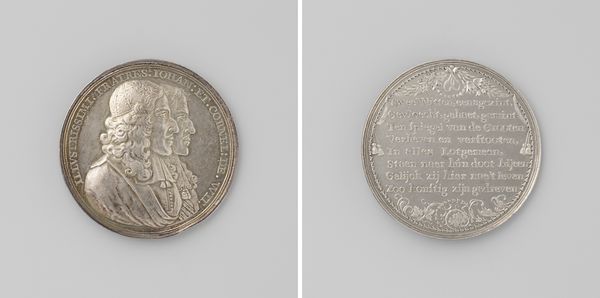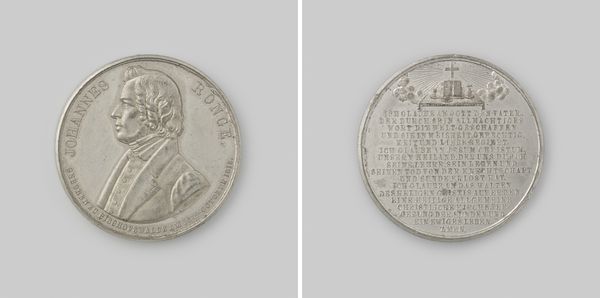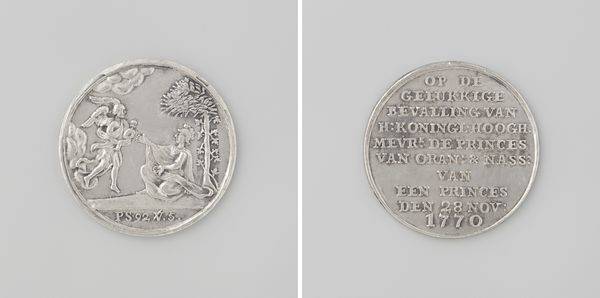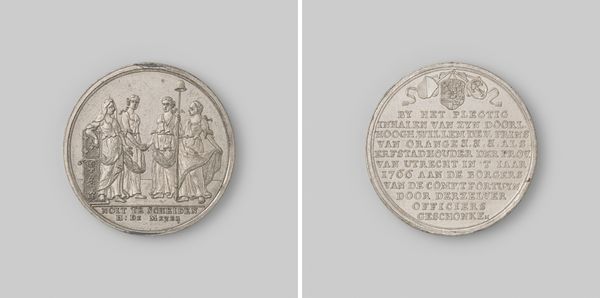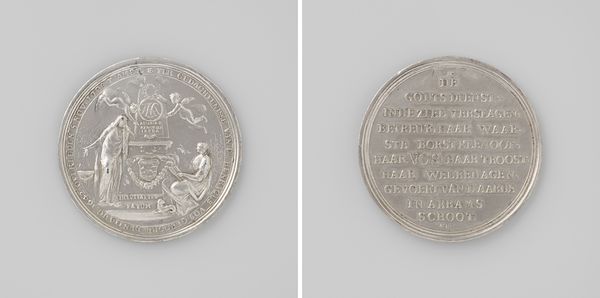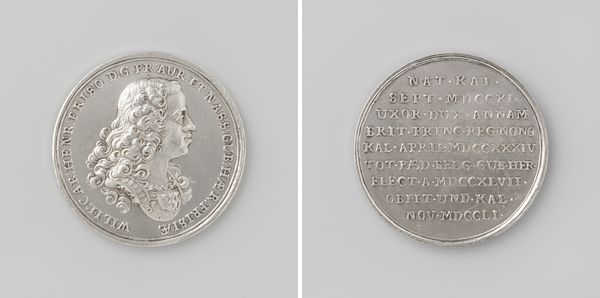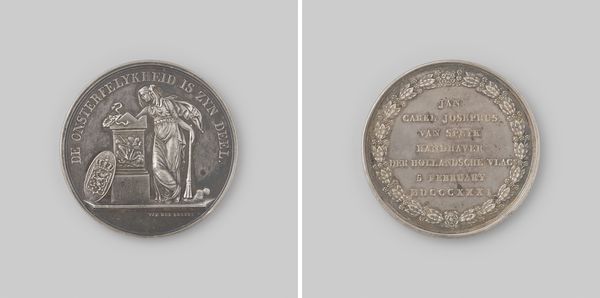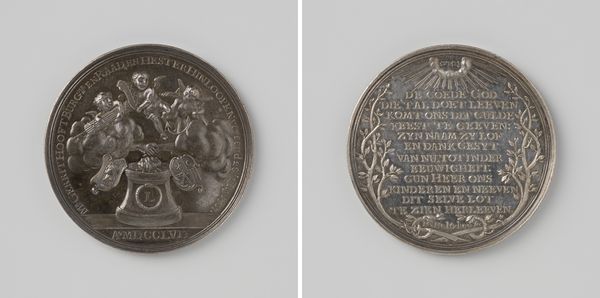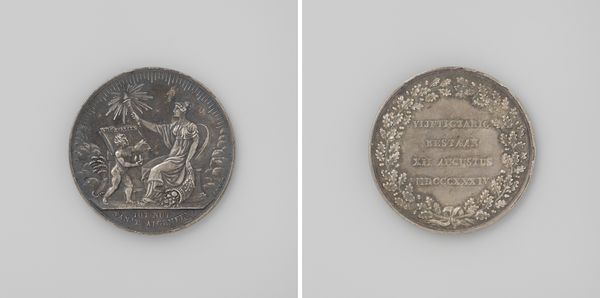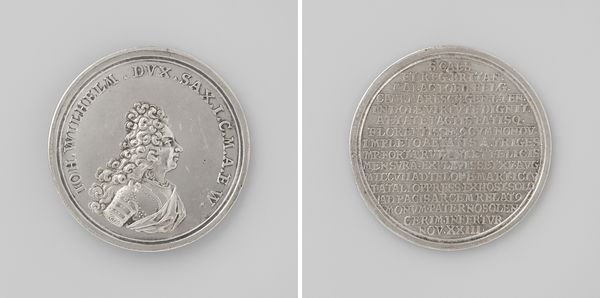
Gedenkpenning aan de schutterij van Haarlem, vereerd voor de diensten bewezen gedurende den doortocht van Prins W.C.H. Friso aldaar 1747
0:00
0:00
metal, engraving
#
portrait
#
baroque
#
metal
#
old engraving style
#
history-painting
#
engraving
Copyright: Rijks Museum: Open Domain
Curator: This artwork, crafted in 1747, is a commemorative medal by Gerrit Marshoorn titled "Gedenkpenning aan de schutterij van Haarlem, vereerd voor de diensten bewezen gedurende den doortocht van Prins W.C.H. Friso aldaar"—a mouthful, I know! It celebrates the Haarlem civic guard’s services during Prince William IV's procession. Editor: Oh, my first thought? It looks so serious! And official. The tiny lettering, the stern-looking prince… It makes me think of history textbooks and important, dusty events. Curator: Indeed. Medals like these weren’t merely decorative. They were potent political tools. The Baroque style lends itself to conveying power, privilege and legitimisation through artistic visual language and accessible mediums. The choice of metal as the medium adds to its intended durability and circulation. Editor: Power, yeah, I see it. That tight, elaborate wig, almost a cage around his head…and his gaze is very direct. It almost feels staged. Is he really thanking the guards? Or solidifying a message for generations to come, for social cohesion by a unified statehood, under new rule? Curator: The latter is plausible. Consider that Prince William IV's appointment as stadtholder was a moment of political shift. Before that point, stadtholdership had been abolished for a long while across many Dutch provinces. Awarding this medal to the Haarlem civic guard ties into understanding it as an attempt to associate this 'new' stadtholder with safety, with tradition and order. Editor: That adds another layer. I’m imagining the ordinary citizens receiving this medal. To hold history, quite literally, in your hands! Curator: It provided the holder and society an identity that binds each and everyone, embedding themselves with the feeling of social stability. Consider the interplay between image and text here: William IV is visually positioned as someone capable of maintaining social order through his authority in society. The text inscribes his claim over a collective shared past. Editor: This deep-dive into how a small medal reflects grand social and political themes has really gotten me thinking of history in a different light! Curator: And I’m now more tuned to how objects speak volumes through their artistic language, making it easier to identify their function, role and positionality in culture and society.
Comments
No comments
Be the first to comment and join the conversation on the ultimate creative platform.


